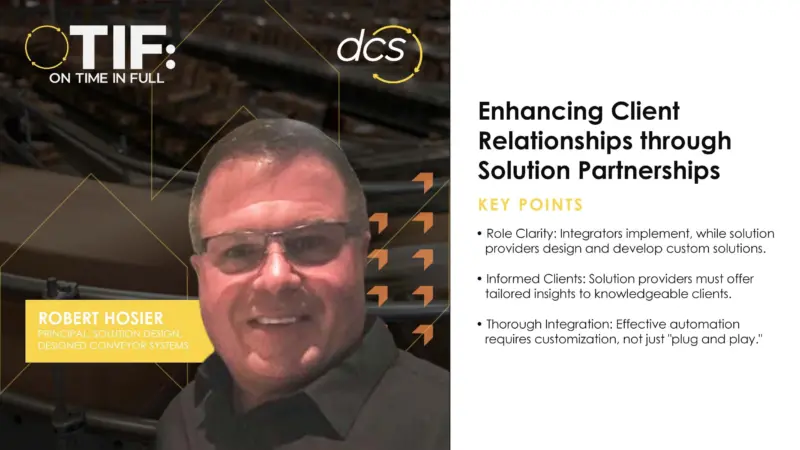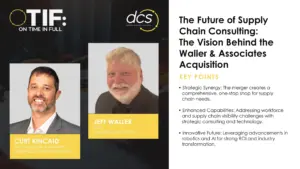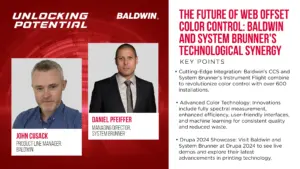Listen: Breaking the Mold of Continuing Education with Bryce Stuckenschneider
How do you take Continuing Education and turn it from a snore-fest to a big score? On the first episode of The AEC Stuck-Insider with Bryce Stuckenschneider, we dive into all things CE in AEC. With experience as a VP of Sales and Marketing in the AEC industry, Stuckenschneider has experienced his fair share of courses, both as an educator as a learner; what he’s seen has been nothing short of disheartening. Busy schedules, boring presentations, and a lack of creativity is putting roadblocks in front of crucial educational material needed to keep AEC professionals in-tune with their customers and in-sync with the most innovative technology.
“If it’s not coming to your firm, some of these architects and designers are so stinking busy,” Stuckenschneider said. “If it’s not in their office during their lunch hour, there are a lot of reasons they’re not going to want to come, and so you have to be compelling.”
It’s not all doom and gloom, though. In this podcast, we dive into the main changes coming through AEC that are keeping professionals on their toes, and how creative and engaging education from Stuckenschneider and his peers is helping keep architects and designers in the classroom– willingly.
The Importance Of Continuing Education
Daniel Litwin: Talking about collegiate education, now we’re going to talk about continued education. Great segue. So basically what I’d love to talk about here is continued education in general. Why do you feel like it’s important especially in an industry like AEC and I mean at the same time it’s also required in a lot of these industries, right? It’s not just like lifelong learning where, “Yeah, I’d love assimilate more information,” and stuff that is required for your industry to keep up with changes and just be compliant.
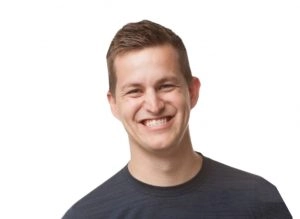
Bryce Stuckenschneider: Yeah. I think there are kind of two pass here of why it’s important. Number one, obviously it’s required. And when I describe to people outside the industry, I say, “You know, there are some professions where you just have to keep learning, to keep certifications,” and I usually point to nursing and other industries like that and people seemed to get it. But I say, “There’s also just if you want to be on top of your craft in what you do, you should always continue to learn.” I feel like the people who get that diploma when they’re 21 years old, 22 years old, and say, “All right, great. I’m never going to study for the rest of my life. I’m never going to take another test. Learning is done for me,” I don’t think those are people that get very far in life.
So what’s kind of cool about this AEC industry is it’s kind of built-in that you’re forced to continue learning and there’s great courses and there’s terrible ones and there’s a lot of in between and that’s a little about what we’re going to talk about today and that’s what I become weirdly passionate about is there’s a great way to do this and not a lot of people are doing it great and I think there’s a chance. There’s kind of a hole in the market that we could kind of fix that.
A Mostly Unexpected Transition
DL: Right. And so you spent a lot of time in the industry before transitioning to being an educator in the industry, what encouraged you to make that switch? Did you want to become an educator within AEC because that was just a passion of yours to be the educator, the leader, or did it just transition naturally?
BS: No. Like most things in my life I completely stumbled into it. So I was VP of Marketing for a few years and got to write some of this content work with some great people who are more talented than myself and then also kind of where the sales at for a while as well and from the manufacturing side in the AEC industry, a lot of times these manufacturers are sponsoring these courses. That’s how these get made. That’s kind of going back to why there’s some good, bad, and ugly of these courses is because not all of them have kind of the truest intentions.
 And so one of the things that I learned in living in airports and all across, not just America, North America, teaching some of these courses is that there’s a huge gap, a huge opportunity. I started teaching course that were really, really good content, some that I got to be a part of creating, some that I didn’t, and the constant refrain was when I got done teaching was, “Wow, I’ve never been to a course like that.” I completely thought I was going to check out for this last hour and I loved what we talked about. I would have people lined up, I would go and teach one course to kind of a mix of architects and designers from let’s say 10 different firms, I would get invited back to 8 of their headquarters and say, “Can you teach us to our whole team?”
And so one of the things that I learned in living in airports and all across, not just America, North America, teaching some of these courses is that there’s a huge gap, a huge opportunity. I started teaching course that were really, really good content, some that I got to be a part of creating, some that I didn’t, and the constant refrain was when I got done teaching was, “Wow, I’ve never been to a course like that.” I completely thought I was going to check out for this last hour and I loved what we talked about. I would have people lined up, I would go and teach one course to kind of a mix of architects and designers from let’s say 10 different firms, I would get invited back to 8 of their headquarters and say, “Can you teach us to our whole team?”
And I said, “This probably isn’t accident. It kept happening time after time. I’m not that great of a presenter. I don’t think.” And so what I realized is people were thirsty for great material, they were thirsty to be engaged in the right way. So that kind of sprung this idea of what I think is the next chapter of what I’m doing.
“The idea of maintaining certification to stay on top of your craft and the trends of your profession is a noble one. But in the real world, it can be incredibly taxing to find courses that actually stimulate you as an architect or designer. What started as a good idea often turns into doing just enough to get by.”
Daniel Litwin: Right. Well, I mean, it’s crazy that people are that hungry for this kind of education but at the same time, I think for an AEC professional, it’s difficult to find the right education, continued education, especially when your schedule is busy and then the way that a lot of times it’s advertised or presented to you, it’s like is this worth my time? How am I going to fit this into my already busy schedule or how is this going to stand out amongst all the other emails I’m getting about continued education?
Bryce Stuckenschneider: Yeah, exactly. I mean, and a lot of these folks have to take 10 to 15, sometimes even more of these courses a year and they’re really reliant on the gatekeeper at their firm who said, “We’re going to host one every Tuesday or every Wednesday during lunchtime one week.” So there are about 50 to 52 of these opportunities a year.
And there’s really no feedback or interactivity on behalf of the student, the person taking this class as to, “Is it content that they want or not?” They’re just beholding to who was on the schedule, right? And sometimes, you know, political stuff matters, it’s the big brands or the people who have that great relationship with the gatekeeper who got on the schedule and it might be stuff that they want to learn about. 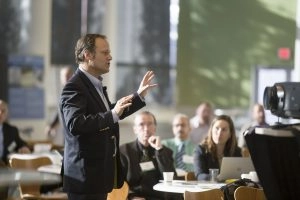
And so that’s another thing that I found is finding the right course, going out of your way because if it’s not coming to your firm, some of these architects and designers are so stinking busy. I mentioned in the piece that we’ve got on MarketScale AEC is we talk about making it convenient for people to get to. And if it’s not in their office during their lunch hour, there are a lot of reasons they’re not going to want to come and so you have to be compelling.
How To Improve In-Person CE Courses
Daniel Litwin: Let’s start with in-person courses. What is going wrong? Why is it difficult gauge interest or to see engaged professionals jump on these course immediately?
Bryce Stuckenschneider: Yeah. So going back a little bit to a lot of them don’t want to go outside their comfort zone or a lot of them are working pretty crazy hours. If you look at the amount of billings that architecture and design [inaudible 00:07:52], they’re billing more hours than ever before, but they haven’t staffed up to pre-2018 kind of economic downturn levels, so they’re doing 30 to 40 percent more work with 20 to 30 percent less people.
DL: Just a quick interjection. Why is that that it hasn’t staffed up? I mean is there a real answer?
BS: I think there are two. One of them is the people who survived the downturn were the high performers and so they have a higher bandwidth, so kind of there for the top-tier of management has realized, “I can get more out of these people.” And also there’s probably a little bit of fear that the economy is going to get back down. And so why hire up if we think we might be a year or two away for another one of these downturns? So those are kind of my two gut reactions.
Another thing that I’ve noticed is that if it doesn’t come into your office, into your firm, it’s difficult to get them. So I’ve seen people do. We’re talking a little bit about what doesn’t work. I’m going to pivot to a little to what does work.
I’ve seen people come up with very creative ways to convince architects and designers to come outside of their comfort zone. A lot of times it’s evenings and it’s happy hours, shocking that booze convinces people to come and learn things. But even beyond that, even beyond it just having like catered meal or good appetizers in an open bar, one of the cool things that I saw was make the entire evening about expanding what you know, not just in your industry but beyond.
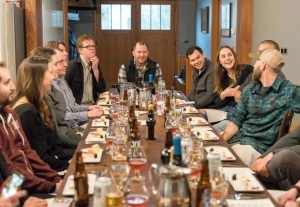
So I went to a series of continuing education courses that we did in Toronto of all places and they actually hired a professional sommelier and he came and taught many course about why you like the types of wine you like as a kickoff. So it just kind of replace that traditional happy hour so people were already in the mood to learn. They’re loosened up obviously because of that and then it just created this environment where we did it once on a Monday and we had multiple schedule for the rest of the week and the attendance kept climbing because people were telling their friends about what we were doing.
And little tricks like that, it wasn’t a huge expense for those who are hosting, but we got an engaged audience and we got more and more people to come kind of subsequent because it was sort of a lecture series.
Incorporating Interactivity.
Daniel Litwin: What about for online continued education courses? I feel like it’s just a whole different set of challenges with online. It’s engaging your students, but you don’t have the in-person eye contact or either you don’t have someone there kind of helping engage you when it’s behind a digital screen, I bet there are some challenges with, you know, it’s easier tune out.
Bryce Stuckenschneider: Absolutely. And I think a lot of the governing bodies that are trying to regulate whether you took a course or not or having a hard time with this is just showing up count as being certified, it doesn’t need to have some sort of interactivity to it, doesn’t need to have real-time quizzes to make sure you’re retaining the information that you learned.
DL: Right. So you’re not just sitting back on a live stream and then it’s over and it’s like, “Okay, we I didn’t retain any information, but check, I got the course.”
BS: There are going to be ways to incorporate interactivity. There are going to be ways that group web conferencing and learning where I can see all of the people that are in the course that I feel like on, you know, conference call, a webinar, any sort of e-learning environment today. It’s a little bit of paying their razor hand digitally or otherwise and ask a question which makes it less human, makes it less real, and I think, I believe, that technology will continue to find ways to innovate and make that easier. 
So right now, it’s a little flawed, but a little awkward. And I think there’s still obviously a future for that and huge universities are making big bets on e-learning. And so I think they’re on to something, but for this industry, for the AEC world and what we’re doing with continuing education courses, it’s still a little tricky, a little clunky, a little clumsy, it’s not impossible, but absolutely when I’m advising manufacturers, when I’m advising design firms and architecture firms, I’m saying, “If it all possible, let’s do this in person. It’s worth the flight. It’s worth bringing in a presenter who knows this content, who’s passionate,” because you’re going to get a more engaged audience.
DL: Right. Especially if the experience level is there too and your AEC professionals walked out of the course feeling like, “Wow! Not only did I learn, but that was fun. That guy was great, you know, really engaging, doing the wine course beforehand.” It’s like, “Wow, I wouldn’t have never taken a class like that,” right? Having them walk out and want to tell their friends like, “Hey, look at this course I just took. Look what I just learned.”
BS: Exactly. And everybody has been to a bad one, everybody has been to the one where the presenter rolls in and they’re checking the box and everyone in the room is checking the box, and it’s just a very transactional thing. I believe it can be more human. I think that starts with content. I think it trickles into the way you present, how and where, and you know, we covered some of that in the piece on the website, but it’s not a finite thing. It’s not, “Here are the three or four things you need to do and now you’re done,” it’s constantly evolving. People like to learn in different ways every year. And so I think it’s going to change every year.
DL: Right. And that kind of brings me to another aspect of continued education, which is a little more on the tech side of things, changes in literal technology that’s either making your job in AEC a little harder or not harder but just it’s making it easier, actually, but having to learn and adopt the new technology is a barrier. Talk to me a little bit about what kind of technological changes are coming through AEC right now and how educators are making sure that architects, designers, engineers in the space are adopting and learning that information and making sure they meet safety requirements, but also efficiency, right? Because that technology is there to help, it’s not there to hinder.
BS: Yeah, absolutely, great question. Again, technology, every year, something different is coming out, but there are a couple of tools that I feel like three or four years ago were kind of on the up-and-coming and how they’re becoming ubiquitous. I think in the AEC world, BIM software is considered kind of the gold standards, building information, modeling, it’s this idea that I am building. We’re in a giant building right now in Downtown Dallas. 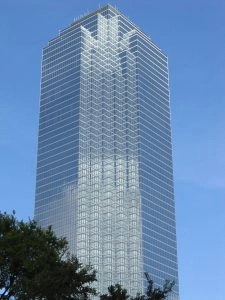
DL: Yes, we are.
What Do We See in The Future?
Bryce Stuckenschneider: The idea is that the facility managers and the people who run this building on their iPad or on their laptop can have essentially a 3D model of the entire building. They can walk through it in real time. They can tap on walls, see what material that wall is made out of, what the fire rating is, how long the warranty last. If something goes wrong, who do I call and what do I reference? That’s all this rich data inside of that.
I remember six, seven years ago, it was kind of this novel idea and, “Oh, it’s going to happen someday.” In a flash world, we’re there. It’s a requirement in a lot of these giant builds now. And I think that’s good. I think it’s accountability. I think it’s accessibility of data for people. No longer are you saying, “Oh, that’s broken. We have no idea where it came from. It doesn’t have a label on it. Good luck.” These buildings are becoming smart buildings.
Read Bryce’s article detailing what to look for in a CE Course.
For the latest news, videos, and podcasts in the AEC Industry, be sure to subscribe to our industry publication.
Follow us on social media for the latest updates in B2B!
Twitter – @AECMKSL
Facebook – facebook.com/marketscale
LinkedIn – linkedin.com/company/marketscale






